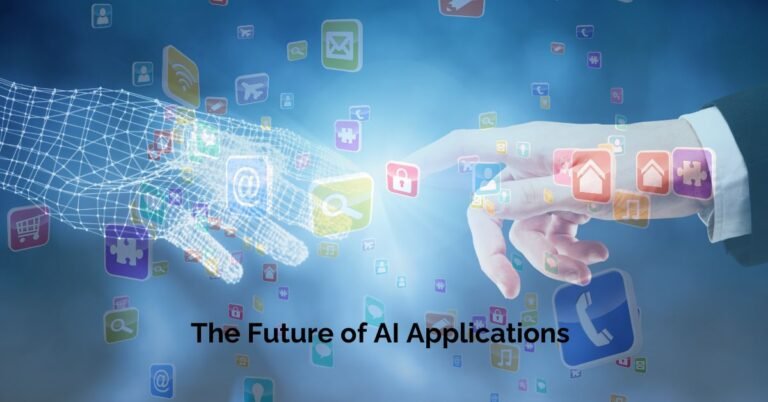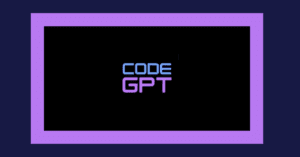Written by Ayesha Arkash
Table of Contents
ToggleTop 12 Best AI Audio Transcription Tools in 2024
Creating detailed descriptions, pricing, pros and cons, and information about demos for all 12 AI audio transcription tools involves much information. Here’s a concise overview of each to help you understand their offerings better:
Otter.ai
- Description: Offers real-time transcription and note-taking services for meetings, interviews, and lectures with excellent speaker identification.
- Price: Free limited plan available; paid plans start from $8.33/month (billed annually).
- Pros:
- Real-time transcription.
- Easy sharing and collaboration features.
- Cons:
- Limited minutes on the free plan.
- May struggle with highly technical jargon.
- Demo: Available on their website, with the free plan acting as a trial.
Rev
- Description: Provides AI and human-powered transcription services with a focus on high accuracy, even in challenging audio conditions.
- Price: AI transcription at $0.25/minute; human transcription at $1.50/minute.
- Pros:
- High accuracy with human transcription option.
- Quick turnaround times.
- Cons:
- Higher cost for human transcription.
- No free trial for automated services.
- Demo: Not explicitly offered, but small orders can serve as a test.
Scribie
- Description: Offers manual and automated transcription services with a strong emphasis on confidentiality and accuracy.
- Price: Automated transcription starts at $0.10/minute; manual transcription is at $0.80/minute.
- Pros:
- Manual transcription option for high accuracy.
- Free re-reviews for manual transcriptions.
- Cons:
- Automated service accuracy can vary.
- Slower turnaround for manual transcriptions.
- Demo: The automated transcription demo is available on the website.
Sonix
- Description: An automated transcription service that provides fast and accurate transcriptions with powerful organizational tools.
- Price: Subscription starts at $10/month with $5/hour of transcription.
- Pros:
- Fast processing times.
- It has advanced search and editing features.
- Cons:
- Subscription is required for the best pricing.
- Extra cost for more hours.
- Demo: A free trial is available, offering 30 minutes of free transcription.
Trint
- Description: Merges automated transcription with a sophisticated editing platform for verifying and correcting transcripts.
- Price: Starts at $48/month for the starter plan.
- Pros:
- Intuitive editing interface.
- Collaboration features.
- Cons:
- Higher cost for individuals.
- Limited minutes on lower-tier plans.
- Demo: A free trial is available with 30 minutes of transcription.
Descript
- Description: Provides transcription as part of a comprehensive suite of audio/video editing tools, ideal for content creation.
- Price: Free plan available; paid plans start at $12/user/month.
- Pros:
- Integrated editing tools for multimedia content.
- Overdub feature to correct or change audio.
- Cons:
- The learning curve for advanced features.
- Higher price for full feature access.
- Demo: The free plan serves as a trial with limited features.
Temi
- Description: Offers quick and affordable automated transcription with a straightforward interface.
- Price: $0.25/minute.
- Pros:
- Fast turnaround time.
- User-friendly interface.
- Cons:
- Accuracy can be affected by audio quality.
- No human transcription service.
- Demo: First file free up to a certain length for new users.
Happy Scribe
- Description: Supports over 60 languages for automated and human transcription services, catering to a wide audience.
- Price: Automated transcription at €0.20/minute; human at €1.95/minute.
- Pros:
- Wide language support.
- High accuracy with human option.
- Cons:
- Costly for human transcription.
- Varied accuracy in automated transcriptions across languages.
- Demo: Offers a free trial with limited minutes.
Amberscript
- Description: Specializes in high-quality automated and manual transcriptions with a focus on accessibility features.
- Price: Automated starts at €0.10/minute; manual at €1.00/minute.
- Pros:
- Strong focus on European languages.
- Good for creating subtitles.
- Cons:
- Automated accuracy varies.
- Higher cost for manual service.
- Demo: Limited free trial available.
Speechmatics
- Description: Offers a versatile API for automated transcription, excelling in multiple languages and dialects.
- Price: Pay-as-you-go pricing model, details provided upon request.
- Pros:
- Advanced language model capabilities.
- Flexible API for integration.
- Cons:
- Pricing can be unclear without a quote.
- More suited for developers and businesses.
- Demo: Demo available through customer contact.
TranscribeMe
- Description: Combines AI with human transcription services, focusing on delivering high accuracy for specialized industries.
- Price: Starts at $0.79/minute for AI; higher for specialized services.
- Pros:
- High accuracy, especially in medical and legal fields.
- Confidentiality and security of data.
- Cons:
- Premium pricing for specialized services.
- Turnaround time varies by service level.
- Demo: No explicit demo, but small orders can serve as a test.
Dragon NaturallySpeaking (Dragon Professional Individual)
- Description: Primarily a speech recognition software that also offers the capability to transcribe audio files to text offline.
- Price: One-time purchase of $300 for the latest version.
- Pros:
- High accuracy in speech recognition.
- No subscription fees.
- Cons:
- Significant upfront cost.
- Learning curve for best results.
- Demo: No traditional demo, but it comes with a 30-day money-back guarantee.
Each tool has unique features and pricing models, catering to different needs and preferences. For the most accurate and up-to-date information, visiting the official websites and contacting the providers directly is recommended, especially for pricing, as these can change and may offer more tailored solutions based on specific requirements or volume.
Comparing Top 5 Ai Audio Transcription Tools
| Feature/Tool | Otter.ai | Rev | Scribie | Sonix | Trint |
| Description | Offers real-time transcription and note-taking services with excellent speaker identification. | Provides AI and human-powered transcription services with a focus on high accuracy, even in challenging audio conditions. | Offers manual and automated transcription services with a strong emphasis on confidentiality and accuracy. | An automated transcription service that provides fast and accurate transcriptions with powerful organizational tools. | Merges automated transcription with a sophisticated editing platform for verifying and correcting transcripts. |
| Price | Free limited plan; paid plans from $8.33/month. | AI at $0.25/minute; human at $1.50/minute. | Automated at $0.10/minute; manual at $0.80/minute. | Subscription at $10/month + $5/hour of transcription. | Starts at $48/month for the starter plan. |
| Pros | – Real-time transcription Easy sharing and collaboration | – High accuracy with human option Quick turnaround times | – Manual option for high accuracy Free re-reviews for manual transcriptions | – Fast processing times Advanced search and editing features | – Intuitive editing interface Collaboration features |
| Cons | – Limited minutes on free plan May struggle with technical jargon | – Higher cost for human transcription No free trial for automated services | – Automated accuracy varies Slower turnaround for manual | – Subscription required for best pricing Extra cost for more hours | – Higher cost for individuals Limited minutes on lower-tier plans |
| Demo | Available on website with free plan. | Not explicitly offered, but small orders can serve as a test. | Automated transcription demo available on the website. | Free trial offering 30 minutes of free transcription. | Free trial available with 30 minutes of transcription. |
What are Ai Audio Transcription tools?
AI transcription tools use innovative software solutions to convert spoken language into written text through artificial intelligence. These tools have revolutionized transcription, making it faster, more accessible, and often more accurate than traditional methods. Using advanced algorithms and machine learning, AI transcription services can recognize speech, understand context, and identify different speakers within an audio file, catering to a wide range of applications from academic research to legal documentation, healthcare records, and content creation.
Understanding AI Audio Transcription Tools
At their core, AI audio transcription tools analyze audio files, breaking down the speech into text by recognizing the spoken words and phrases. These tools are trained on vast datasets encompassing multiple languages, accents, dialects, and specialized terminologies, enabling them to transcribe diverse types of audio content accurately. The AI continuously learns and improves over time, adapting to new speech patterns, accents, and jargon, thus enhancing its accuracy and efficiency.
Key Features and Benefits
- Speed and Efficiency: AI transcription significantly reduces the time it takes to transcribe audio files, delivering results in minutes rather than the hours or days required for manual transcription.
- Cost-Effectiveness: Automated transcription services are generally more affordable than hiring professional transcriptionists, making them accessible to a wider audience, including students, researchers, and small businesses.
- Accessibility: These tools make content more accessible, supporting the creation of subtitles, closed captions, and written records for audio and video content, thereby aiding compliance with accessibility standards.
- Versatility: AI transcription services support multiple languages and dialects, making them ideal for global businesses, multilingual research, and content creators targeting diverse audiences.
- Ease of Use: With user-friendly interfaces and seamless integration capabilities, users can easily upload audio files, manage transcriptions, and edit text within the platform.
Applications of AI Audio Transcription Tools
AI audio transcription tools find applications across various sectors:
- Education: Transcribing lectures and seminars for study materials and accessibility.
- Media and Content Creation: Generating subtitles and written content from podcasts and videos.
- Legal and Law Enforcement: Documenting court proceedings, depositions, and interviews.
- Healthcare: Transcribing patient consultations and medical research interviews.
- Business and Conferences: Creating written records of meetings, conferences, and webinars for reference and compliance.
Choosing the Right AI Audio Transcription Tool
When selecting an AI audio transcription tool, consider factors such as accuracy, language support, turnaround time, pricing, and additional features like speaker identification and custom vocabulary support. Many tools offer free trials or limited usage, allowing users to evaluate their effectiveness before subscribing or buying.
Conclusion
AI audio transcription tools represent a significant advancement in how we process and transcribe spoken language. By automating the transcription process, these tools not only save time and resources but also open up new possibilities for content accessibility, data analysis, and information sharing. As technology continues to evolve, we can expect AI transcription services to become even more sophisticated, further transforming our approach to handling spoken content.
In the digital age, where content is king, AI audio transcription tools are indispensable assets, enabling individuals and organizations to harness the power of spoken words in their digital transformations. Whether for academic research, content creation, or professional documentation, these tools offer a streamlined, efficient solution to meet the growing demand for fast, accurate, and accessible transcriptions.
FAQs
What are AI audio transcription tools, and how do they work?
AI audio transcription tools are sophisticated software programs that utilize artificial intelligence to convert spoken words into written text. These tools work by processing audio files through advanced algorithms that recognize speech patterns, interpret context, and convert spoken language into accurate text. Leveraging machine learning and natural language processing (NLP), AI transcription services improve over time, adapting to new accents, languages, and terminologies, thereby enhancing their accuracy and efficiency.
What are the top benefits of using AI for audio transcription?
The top benefits of using AI for audio transcription include:
- Speed: AI transcription can process hours of audio in a fraction of the time it would take a human.
- Cost-Efficiency: Automated transcription is typically more affordable than manual transcription services.
- Accessibility: Transcriptions make content more accessible to people with hearing impairments and support various accessibility standards.
- Versatility: AI tools can transcribe multiple languages and dialects, making them suitable for global use.
- Ease of Integration: Many AI transcription services offer APIs, allowing businesses to seamlessly integrate transcription into their existing workflows.
How accurate are AI audio transcription services compared to manual transcription?
AI audio transcription services have made significant strides in accuracy, often reaching parity with human transcribers in optimal conditions. While manual transcription can offer near-perfect accuracy, especially in challenging audio conditions, advanced AI tools can achieve high levels of accuracy, particularly with clear audio, standard accents, and non-technical language. The gap narrows further as AI technologies continue to evolve and learn from vast datasets.
Can AI transcription tools recognize different accents and dialects?
Yes, many AI transcription tools are designed to recognize and accurately transcribe different accents and dialects. Training on diverse speech datasets enables these tools to understand variations in pronunciation and speech patterns, although performance can vary across services and specific accents.
Are there AI transcription services that support multiple languages?
Numerous AI transcription services offer support for multiple languages, catering to a global audience. These tools can transcribe audio in major languages such as English, Spanish, French, German, Chinese, and many others, making them invaluable for international businesses, educators, and content creators.
How do AI transcription tools handle technical or specialized vocabulary?
AI transcription tools can be trained to recognize and accurately transcribe technical or specialized vocabulary by using custom vocabularies or specific models tailored to industries like legal, medical, or technical fields. Some services allow users to input custom terms or phrases to improve transcription accuracy for niche terminologies.
What are the privacy and security considerations when using AI transcription services?
Privacy and security are crucial when using AI transcription services. Trusted providers enforce strict data protection measures, including encryption, secure data storage, and adherence to privacy regulations like GDPR. Users should examine the service’s privacy policy, data handling practices, and compliance certifications to guarantee the protection of their data.
How can businesses and professionals integrate AI transcription into their workflow?
Businesses and professionals can integrate AI transcription into their workflow by:
- Utilizing APIs to automate transcription of customer service calls, meetings, and interviews.
- Leveraging transcription for content creation, such as generating text from podcasts or videos for SEO.
- Employing transcription services for documentation and compliance, ensuring accurate records of meetings and legal proceedings.
What are the key features to look for in an AI audio transcription tool?
Key features to look for include:
- High accuracy rates, especially in noisy environments or with diverse accents.
- Support for multiple languages and dialects.
- Ability to handle specialized terminology through customization.
- User-friendly editing and correction tools.
- Secure data handling and privacy policies.
- Integration capabilities, such as APIs for seamless workflow integration.
How has the development of AI technology improved the performance of audio transcription tools?
The development of AI technology has dramatically improved the performance of audio transcription tools through:
- Enhanced speech recognition algorithms capable of understanding complex speech patterns and accents.
- Machine learning models that adapt and improve over time with exposure to more data.
- Natural language processing advancements that enable better context understanding and punctuation.
- Increased processing speed, allowing for real-time or near-real-time transcription.
- Broader language support and the ability to learn from user corrections, continuously enhancing accuracy and usability.

























